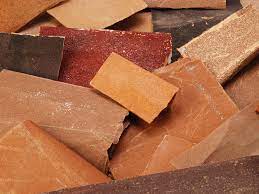Remember that certain hardwood may require extra steps between each grade depending on their finish. Getting the right abrasive material in place for each step is an essential aspect of sanding hardwood floors; Ultrafloors Canberra recommend starting with a coarse grit paper rated at 24 is a good choice and then moving to finer options like those rated 36 grit and ultimately 60 grit is a smart way to get the desired finish when working with oak wood. To ace your floor sanding and polishing project, it pays to acquaint yourself with various abrasion particles and their specific uses.
Through careful selection of the right abrasives for every stage of your endeavor, you can achieve remarkable outcomes that withstand years of use.
Grit Size and Abrasiveness
Grit size, a measure of abrasiveness in sandpaper and other polishing materials determines the number of particles per square inch. Higher levels of abrasiveness are indicated by larger particles. The standard grit range used in floor sanding is coarse to fine grits with aggressive removal of material using coarse grits and finer grits providing a smoother finish.
Coarse grits typically range from 24 36 medium ones are usually 40 60 and fine grits fall in the range of 80 120. Removing old finishes or heavy scratches is best done with coarse grits while medium and fine ones can prepare surfaces for staining or finishing. Choosing appropriate sandpaper ensures efficiency and proper completion of tasks by considering the type of material to be worked on as well as desired outcomes.
When working with different materials it is essential to carefully select the suitable degree of abrasiveness required for each task at hand. An overly rough abrasive can inflict destruction on delicate surfaces such as wood or metal while using an excessively soft abrasive can leave behind a substandard finish.
Initial Grit Selection
When considering floor sanding and polishing projects in Canberra choosing the right initial grit plays a critical role in determining end results quality. It requires careful thought taking into consideration several key factors including: current state of flooring surfaces; presence or not of any coating defects; and desired amount of materials which should ideally get removed during this process.
Should floors have no coating defects or imperfections and are deemed structurally sound then using a medium grit sandpaper (such as 80 grit) is appropriate for an initial attempt to remove minor surface irregularities before following through with finer grades.
If surfaces have coating defects or are damaged in any way shape or form then opting for a coarser grit such as 40 grit becomes necessary to achieve effective removal before progressing onto finer grades during the sanding process. Lastly the desired amount of material which should be removed must also be taken into consideration. Use a medium grit sandpaper when minimal material removal is needed; however if more aggressive removal is desired then starting off with something coarser would prove most effective.
Achieving optimal results in floor sanding starts with thoughtful grit selection that accounts for multiple variables. Among these variables are the condition of the floor, presence of coatings or imperfections and desired level of material removal. By taking each factor into account when choosing an initial grit you can set yourself up for success in achieving your ideal level of finish.
Coarse Grits for Heavy Floor Sanding in Canberra
Sanding projects can often require a gritty approach – enter: coarse grits! These tools of the trade typically range from 24 36 and are perfect for removing old finishes, paint or dealing with deep scratches.
But hold your horses! Coarse grits come with their own set of warnings: improper use can wreak havoc on surfaces you’re trying to restore rather than beautify them. Exercise caution by starting off gently when dealing with heavier tasks and then gradually increasing intensity until you achieve your desired finish.
Additionally remember that technique matters! Properly overlapping strokes and working in one direction only can ensure an even finish without leaving any marks or scratches on the surface.
And don’t forget about dust: always wear a mask while sanding with coarse grits since these produce plenty of airborne particles that you don’t want to inhale.
In summary coarse grits are a great asset for the heavy sanding tasks you may face. Just be sure to use them with the utmost care and adhere to proper techniques.
Medium Grits for Smoothing and Leveling
Medium grit sandpaper is an all purpose solution that can be used across various projects involving metal, plastic or wood materials ranging from 60 100 grits. One key benefit that stands out is how easy it delivers a uniform level of smoothness throughout any surface type with ease.
Leveling and smoothing flooring surfaces couldn’t have been more effortless than using medium grit sandpapers because they effectively eliminate prior sanded imperfections while also easing preparation work by eradicating minor flaws gotten from primary sanding efforts.
In addition it is excellent in shaping rough woods through removing planning marks which makes it an essential tool when tackling auto body repairs since it helps smoothen rough areas before applying base coats. The trick to choosing suitable medium grit sandpapers for your project is by paying careful attention to the material type being worked on and the desired finish outcome. For instance selecting ultra fine grits over medium coarseness ones is ideal if you want a smooth finish on wooden surfaces.
Fine Grits for Final Sanding
A smooth and polished finish is only possible if you use the right fine-grained sandpapers during your project’s sanding process. Ideally, utilize final-sanding grits between a range of 100-120 since they work best in refining surfaces and removing any remaining scratches prior to finishing or coating them. As you progress through higher numbers of greater finesse of sandpapers beyond 600-1,000 approximate ranges after coarser varieties from between coarse gradations of about 24 all the way up to ~30-36 maximally offer more refined outcomes.
Why Choose Us for Your Floor Sanding & Polishing Services Need?
Here at Ultrafloors – floor sanding Canberra, you’ll find a team of experts specializing in exceptional floor sanding & polishing services – no other floor sanders in Canberra! Having been in the field for years we have honed our craft to provide you with top notch wooden floors service unparalleled by anyone else. Our use of premium materials and products guarantees outstanding durability so that your floors look great for years on end! At Ultrafloors – floor sanding Canberra, one thing comes above all else: customer satisfaction.
We go above and beyond for each client doing everything possible until they are thrilled with their spaces new look! Our countless positive reviews testify not only to the high caliber of our work but also validate our customer centric approach. We know firsthand how essential it is for homes or businesses alike always to have stunning flooring; hence why we treat each project as if it were ours.


